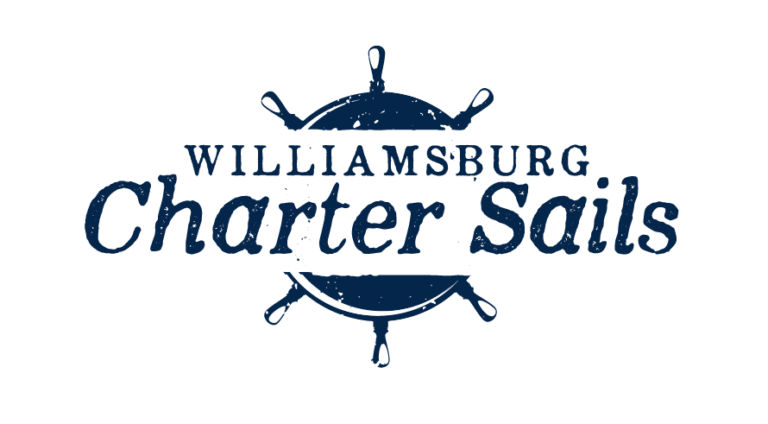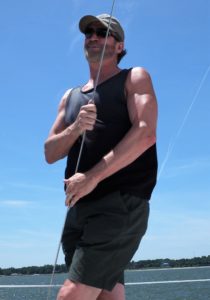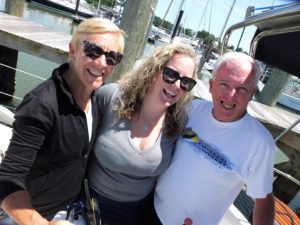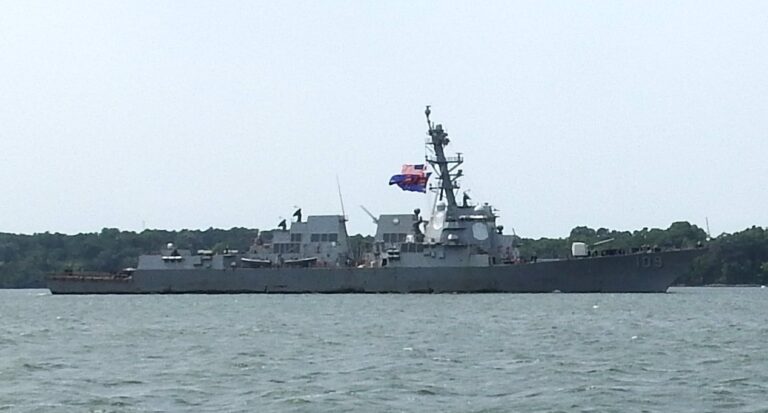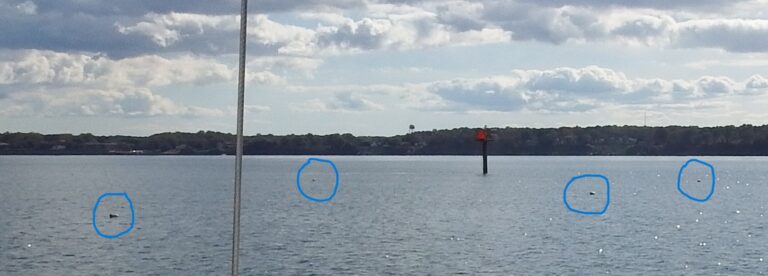-
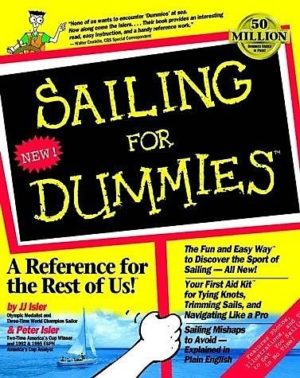
A good primer for newbies. 1. OVER-THINKING—Look, this is a sport. It’s not rocket science. Many of my students had bad experiences on a sailboat as a child or with their dad or first husband. That was then. Now you have another chance. Clear your mind of preconditions and take one step at a time. Read a beginners book like Sailing For Dummies to realize how much you already know. For example: Once clear of the marina, keep the engine on low speed and raise the sail while pointing into the wind.
-
OVER-CONFIDENCE—Men who used to run motorboats are the worst because they assume a sailboat isn’t much different. Way different, beginning with the stability curve. While a keel sailboat won’t tip over, a centerboard sailboat will easily flip. Motorboat dudes fail to realize how dangerous the boom can be when it tacks around, or worse—gybes.
-
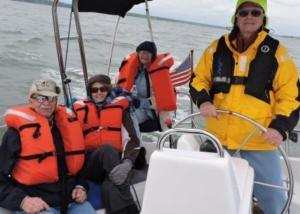 ASSUMING SAFETY—The most dangerous thing about any boat is the water you risk falling into. In early spring when the weather warms up, river and lake water is still frigid and can lead to death-defying hypothermia in less than 15 minutes. Therefore…
ASSUMING SAFETY—The most dangerous thing about any boat is the water you risk falling into. In early spring when the weather warms up, river and lake water is still frigid and can lead to death-defying hypothermia in less than 15 minutes. Therefore…-
Always wear a life preserver,preferably USCG I Class because they have a neck brace built in that will keep your ahead afloat if you’re unconscious.
-
Tether to the boat if sailing solo. Tie it off to a centerpoint of the boat, preferably the mast. Tie it tight around your waist, or better yet attach it to a safety harness that covers the entire torso.
-
Dress for cold weather. You can always peel off the layers if things warm up. Bring an extra pair of dry socks.
-
Learn which lines to release first and last when departing the dock. Practice docking and departing (see video below). Rule of thumb: Don’t approach the slip or dock any faster than you would if you intended to hit it. When reaching a dock, always try to slide into it rather than head-on. Think of it as parking a car.
-
-
SAILING TOO FAR—It’s easy to sail out into the water on a close reach, only to find out that it takes longer to get back. Be aware of the tides and when they change. It’s harder to sail against the current. Unless you have a competent engine, don’t go too far. Learn the range of how far to go on certain winds before having to turn around. Take a marine radio with you to summon help on the water. A cell phone won’t connect you to that nearby rescue boat. Among all the mistakes newbies make, this is potentially the worst.
-
BUYING TOO QUICKLY—People get so enthusiastic that they sometimes fall in love with the first boat they excell on. Take your time and test different sizes and lengths. The American Sailing Association offers 22-foot and 36-foot keel boats to test the extremes. ASA also offers a membership component that precludes buying any boat. The website getmyboat.com offers myriad sailboats of all sizes to rent on nearby bodies of water. Think of it as Uber for boats.
-
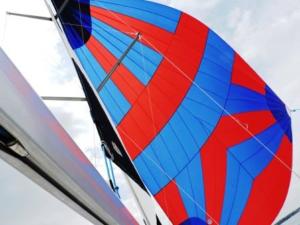 FLYING SPINNAKER—This looks fancy but it requires a certain skill and experience. Choose asymmetrical over symmetrical because the latter requires more crew. Buy a chute for the asymmetrical to raise and douse the sail easily. Be sure to keep all the spinn lines outside the boat. Learn the spinnaker from a buddy or a teacher before trying it yourself. Never fly it solo.
FLYING SPINNAKER—This looks fancy but it requires a certain skill and experience. Choose asymmetrical over symmetrical because the latter requires more crew. Buy a chute for the asymmetrical to raise and douse the sail easily. Be sure to keep all the spinn lines outside the boat. Learn the spinnaker from a buddy or a teacher before trying it yourself. Never fly it solo. -
BUYING TOO SMALL—Some new owners develop buyer’s remorse for having bought too small. Two rules of thumb:
(a) Think distance instead of speed or comfort. If you plan on going out on a Saturday morning to sail across the water to a mooring overnight, you want at least 25 feet of boat. But if you’re taking a week’s cruise, think 30-40 feet. If you’re just enjoying an afternoon, 22 feet works fine. (b) Whatever length you decide, add two feet and buy bigger even if you think you can’t afford it. Otherwise within a year you’ll be selling the short boat at a comparative loss. Or wishing you had.
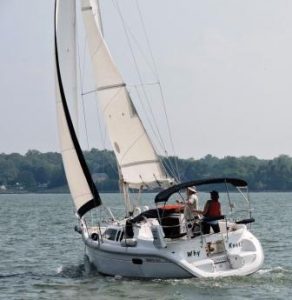
8. OVER-REACHING—The Close Reach is the optimum point of sail for speed, but the boat shouldn’t tilt or heel more than 15%-20%. Anything beyond that is uncomfortable and won’t increase speed. Be prepared to ease the mainsheet or release the traveler. Watch the water for approaching gusts so you can turn instantly to a Beam Reach that will flatten out the boat.
-
GADGETS—Sailboats already come with plenty of challenges without adding complexity to things. Learn to read paper charts before investing in an electronic chart plotter. Take the time to read the wind before installing a wind-direction meter. Use inexpensive telltales instead. Learn to steer in any condition before converting to auto-pilot.
-
OVERBOARD—The fatal flaw to boating. Respect the water. And don’t fall off the dock, either, because it makes you look ridiculous.

Last Sail
It was a cold and dreary afternoon in late November when I took Stephen Warrick out for the fourth time, with his pal Lisa Fronkenberger. They took ASA 101 together with two other people whom they will join for a combined 103/104 that will take them three days and two
